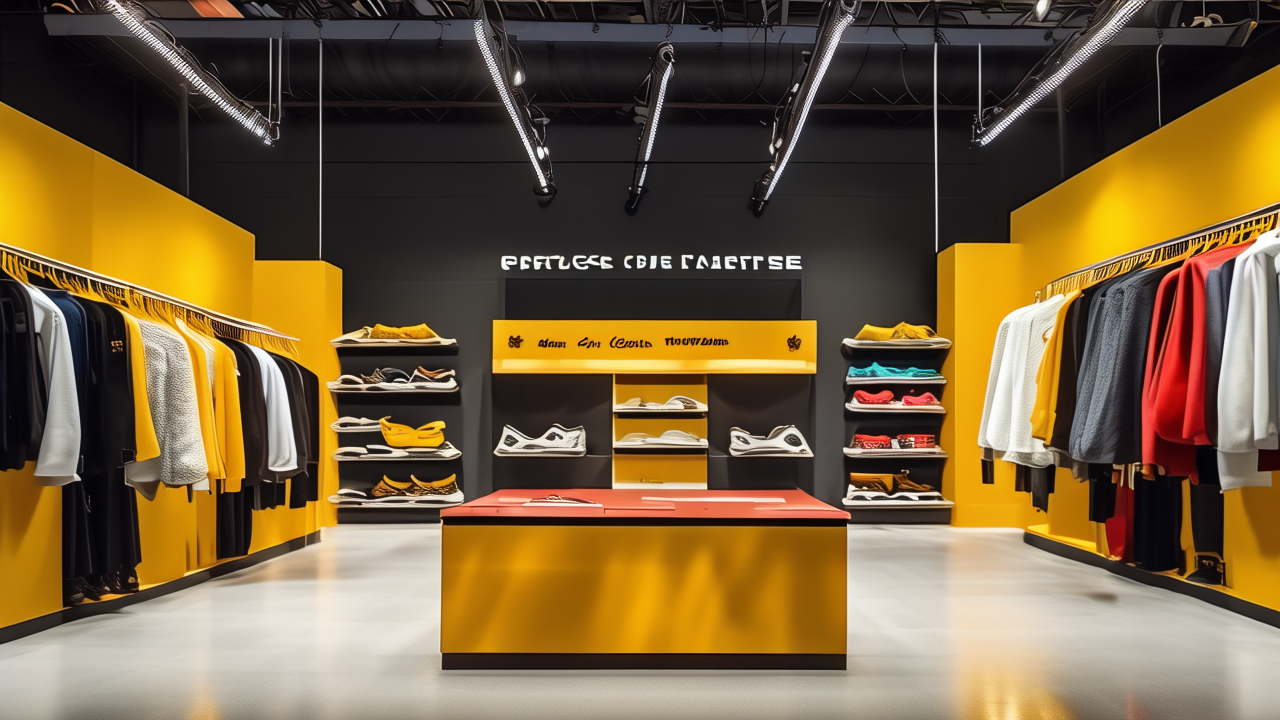
AsianFin — In 2008, as the Beijing Olympics captivated the world, a powerful image emerged: basketball icon Yao Ming, leading the Chinese men’s team into the top eight while sporting a pair of limited-edition, red-and-white Reebok sneakers. The “Chinese Dragon” shoes, with only 2,008 pairs made, became an instant sensation. Fans swarmed Reebok stores nationwide, and some even flew to Beijing just to get their hands on a pair.
At the time, Reebok was just two years into its acquisition by Adidas. The German sportswear giant had paid €3.1 billion, hoping to leverage Reebok's influence in the U.S. and use its connection with stars like Yao Ming to break into the booming Chinese market. For a moment, Reebok, Adidas, and Yao Ming were a formidable trio, dominating the headlines.
Fast forward 16 years, and that picture of global dominance has faded into a poignant symbol of decline. At a Reebok outlet in Beijing, those once-coveted basketball shoes now sit on a rack, barely noticed, with a 70% to 90% discount tag. This stark scene plays out as the company’s future hangs in the balance, a reflection of its turbulent journey.
Rumors have been swirling that China’s Anta, often called the "King of Acquisitions," is on the verge of buying Reebok. However, these reports have been met with a firm denial from the brand's current owner, the American brand management company ABG, which stated it has "no intention of selling." If the deal were to go through, it would mark Reebok's third ownership change in two decades.
Reebok's journey has been one of a spectacular rise and a long, painful fall. Acquired by Adidas for €3.1 billion in 2006, it was sold to ABG 15 years later for €2.1 billion, a €1 billion loss. The brand that once surpassed Nike to be the world's number one now holds a market share of less than 1.5%. In China, its 2024 e-commerce revenue was a mere 160 million yuan—a fraction of its former glory.
Reebok’s story began in 1895 when a 14-year-old British boy named Joseph Foster invented the world's first spiked running shoe. In 1958, his grandsons founded Reebok, naming it after a swift African antelope. The brand’s first major breakthrough came in the 1980s, when American entrepreneur Paul Fireman saw an opportunity in the women’s aerobics craze. While Nike and Adidas were focused on men’s sports, Reebok launched the Freestyle, the world's first women's aerobics shoe. It was a massive hit, and by 1987, Reebok’s sales of $1.4 billion surpassed Nike's $900 million, making it the global leader.
The second turning point was the NBA. In 1989, Reebok introduced its innovative PUMP technology, which used an inflatable button to adjust shoe fit. This tech was famously showcased by NBA star Dee Brown, whose iconic "no-look dunk" in 1991—while wearing Pump shoes—propelled the brand into the spotlight. The shoes sold four million pairs in just 18 months, solidifying Reebok's place alongside Nike and Adidas as a global powerhouse.

However, the acquisition by Adidas in 2005 marked the beginning of its decline. Adidas’s main goal was to leverage Reebok’s strong position in the U.S. and its major sports league sponsorships. But in the years that followed, Adidas began to siphon off those valuable sponsorships to build its own brand. Stripped of its prime exposure in the NFL, NBA, and NHL, Reebok lost its identity as a serious performance brand and shifted toward the casual fitness market, becoming an afterthought for its parent company. Former Adidas CEO Kasper Rorsted even admitted in 2021 that the Reebok acquisition was the "most expensive mistake" the company had ever made.
When ABG, a company known for its "asset-light" brand management model, bought Reebok in 2021, the brand continued to struggle. Without a strong focus on in-house production and innovation, Reebok's ability to introduce new, market-capturing technologies waned, leaving it unable to compete in a rapidly evolving sportswear landscape.
Can Anta Repeat its Magic?
Anta's potential acquisition of Reebok isn't just a corporate deal; it's a test of its "King of Acquisitions" strategy. Anta has a proven track record of buying struggling brands and turning them into profitable powerhouses. The most famous example is FILA. Acquired by Anta in 2009 when it was losing millions, FILA was rebranded from a professional sports label to a high-end sports fashion brand. It became so successful that it now accounts for more than half of Anta's revenue and has a gross margin exceeding 65%.
Anta has since applied this model to other brands like Arc’teryx and Salomon, which have become symbols of trendy, middle-class fashion in China. For Anta, Reebok represents a similar opportunity. With its heritage in women's aerobics and a vast archive of retro designs, Reebok could be a perfect fit for a company looking to capitalize on both the burgeoning "she-economy" and the current nostalgia trend. Anta's recent acquisition of MAIA ACTIVE, a brand for Asian women, further underscores its focus on this demographic.
However, the risks are high. Despite its lackluster performance, Reebok still commands a significant valuation, and another major acquisition would put financial pressure on Anta. More importantly, Reebok’s rebellious, innovative spirit that defined its golden era has been replaced by a quiet existence in a crowded market. The brand's recognition, especially among the crucial Gen Z demographic, is almost non-existent.
Reviving a brand is far harder than acquiring it. Anta’s playbook of transforming niche brands into mainstream successes will face its biggest challenge yet. In a world dominated by giants like Nike and Adidas, and with new players like Lululemon and Li-Ning seizing market share, Reebok can no longer rely on its past glory. For the brand to make a comeback, it needs more than a new owner; it needs a compelling new reason for consumers to care.
更多精彩内容,关注钛媒体微信号(ID:taimeiti),或者下载钛媒体App

